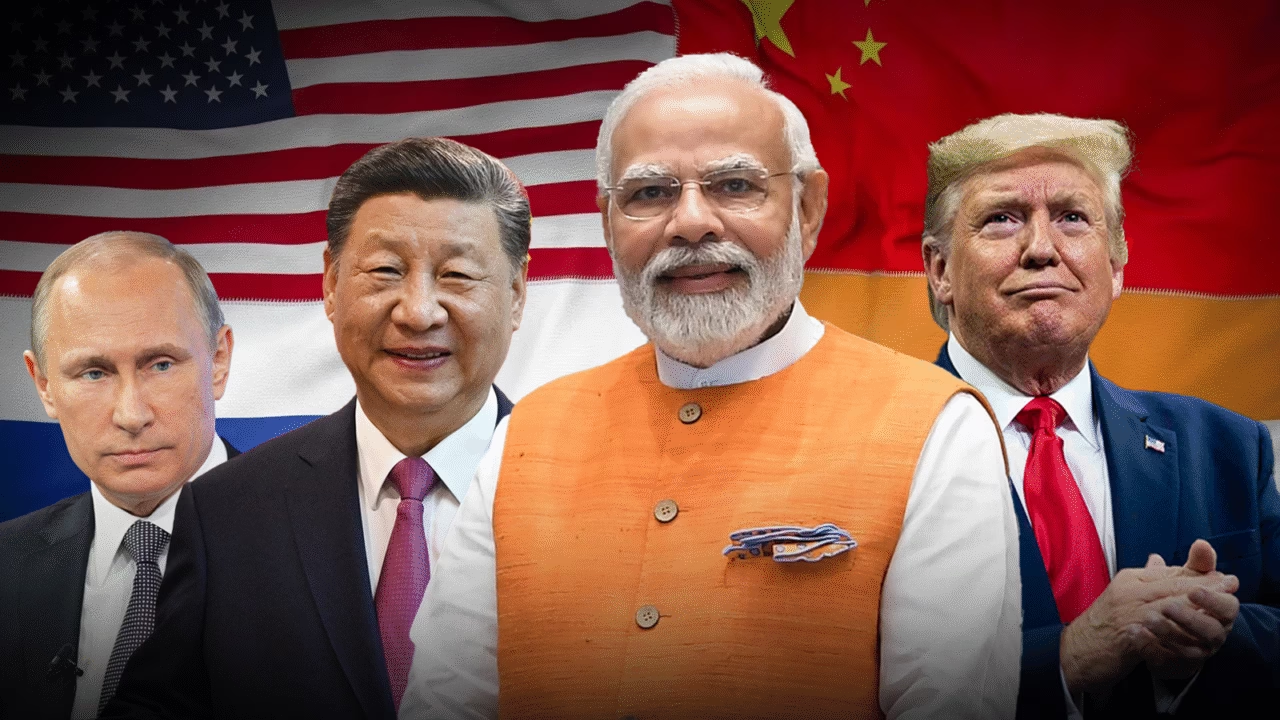In the intricate geopolitical landscape of today, India is engaged in a careful balancing act with three significant global powers: the United States led by Donald Trump, China under Xi Jinping, and Russia with Vladimir Putin. Although diplomatic handshakes and ceremonial gatherings often make the news, experts suggest that India’s long-term strategy must encompass more than mere symbolic actions to protect its interests.
The U.S. Factor: Navigating the Trump Era
Historically, the United States has been one of India’s key strategic allies. During Trump’s presidency, trade discussions, tariffs, and evolving foreign policy priorities posed new challenges. India faced pressures to liberalize its markets, align with U.S. trade policies, and address concerns regarding defense and technology collaboration.
While Trump’s personal diplomacy, marked by handshakes and prominent meetings, provided opportunities for visibility, India understood that a more profound, structural engagement was necessary. Enhancing institutional connections, negotiating long-term trade deals, and ensuring defense collaboration extend beyond public displays and are vital for sustaining a robust U.S.-India partnership.
China: Beyond Diplomatic Formalities
Under the leadership of Xi Jinping, China poses both a strategic challenge and an essential economic ally. Issues like border disputes, regional rivalry, and China’s expanding influence in South Asia necessitate a careful and proactive strategy from India. Simple gestures, such as handshakes or symbolic agreements, cannot replace the need for strong policies regarding security, trade, and infrastructure development.
India must adopt a strategy that balances engagement with assertiveness. By actively participating in multilateral forums, reinforcing alliances with neighboring nations, and enhancing its own defense capabilities, India can safeguard its interests while fostering a cooperative relationship with Beijing. Relying solely on diplomatic niceties will not resolve enduring disputes or address regional ambitions that may clash with India’s strategic goals.
Russia: Strategic Depth Beyond Ceremonial Relations
India’s long-standing relationship with Russia, particularly under Vladimir Putin, adds another layer of complexity. Defense collaboration, energy initiatives, and geopolitical alignment have historically been at the core of this bilateral relationship. While handshakes at summits may symbolize goodwill, India must prioritize practical partnerships, such as technology transfers, joint military exercises, and energy security.
As Russia faces its own international challenges, India’s strategy must balance its historical connections with current necessities. Ensuring strategic depth involves maintaining cooperation even in the face of global tensions, economic sanctions, or shifting political landscapes. India cannot depend solely on ceremonial diplomacy to safeguard these crucial interests.
The Necessity of a Comprehensive Approach
The primary takeaway from India’s dealings with Trump, Xi, and Putin is unmistakable: while symbolic gestures play a role in public diplomacy, they are not enough by themselves. India’s approach should integrate diplomacy, economic involvement, defense readiness, and multilateral partnerships.
For example, during trade discussions, India must safeguard its domestic sectors while taking advantage of global opportunities. In terms of defense, India should aim for self-sufficiency, engage in joint ventures, and form strategic alliances that provide security without relying too heavily on any one country. On the geopolitical front, being active in regional forums and strengthening relationships with other democracies enables India to balance the influence of major powers.
Looking Forward: Actionable Measures
To successfully navigate this intricate environment, India should prioritize tangible results over mere appearances. This means formalizing trade deals, improving border security systems, broadening defense partnerships, and investing in technological and energy self-sufficiency. Strategic planning must also take into account the long-term effects of global changes, ensuring that India’s national interests are protected regardless of the diplomatic gestures made by individual leaders.
Additionally, maintaining effective communication with domestic stakeholders, such as industry leaders, policymakers, and the general public, is crucial to ensure that diplomatic efforts yield real benefits for the country. By merging practicality with diplomacy, India can sustain robust relationships with the U.S., China, and Russia while maintaining its independence and regional power.
Handshakes, summit meetings, and photo ops are vital diplomatic instruments, yet India’s dealings with Trump, Xi, and Putin reveal that true influence stems from meaningful engagement. To safeguard its national interests, India must focus on strategic planning, strong defense, economic stability, and multilateral collaboration. In a swiftly changing global landscape, India’s achievements will hinge on its ability to convert diplomatic efforts into tangible, lasting results instead of depending merely on ceremonial acts.

